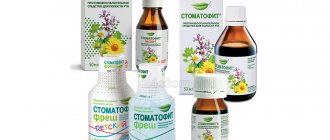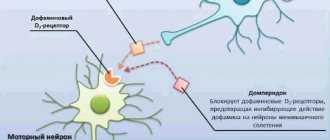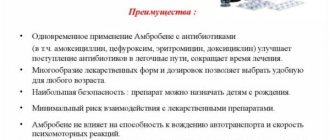Properties
"Normoflorin D": composition, description
The drug is produced in the form of a solution, which contains lactobacilli in quantities of 1 billion units and bifidobacteria in quantities of 100 million units. These are living cultures, so the solution also contains their metabolic products, including:
- amino acids;
- microelements;
- vitamins;
- macroelements;
- lactitol is a substance characterized by prebiotic activity;
- antimicrobial components;
- organic acids.
The drug is sold in 100 ml bottles. They should be stored in a dark and cool place, such as a refrigerator. The optimal temperature range is from 2 to 6 degrees Celsius. Direct sunlight and access by children should be excluded.
It is important to understand that the drug has a short shelf life, since it contains live bacteria. The product must be used within 60 days from the date of production. After this period, the number of living cells decreases sharply.
Indications for use
Normoflorin-B bifidobacteria
Compound:
Bifidobacteria (B.bifidum, B. longum) at least 1 billion microbial cells in 1 ml.; products of bacterial metabolism: organic acids (including lactic and succinic), amino acids (including essential), micro- and macroelements, vitamins, antimicrobial substances of natural origin; prebiotic lactitol, which stimulates the growth of protective microflora.
Description:
The microorganisms in the Biocomplex are not genetically modified. No lactose or cow's milk protein. Completely natural, without preservatives, dyes, taste adapters.
Properties:
In a short time it restores the intestinal microflora , participates in the metabolism and absorption of proteins, fats and carbohydrates by the body, restores cholesterol and bilirubin metabolism; improves the absorption of calcium and iron salts, vitamins D, P, improves the synthesis of B vitamins; prevents the penetration of endotoxins into the body and the development of intoxication, stimulates the production of interferons and the maintenance of the general pool of immunoglobulins.
Indications for use:
- Chronic diseases of the gastrointestinal tract (peptic ulcer of the stomach or duodenum, postcholecystectomy syndrome, celiac disease, erosive gastritis) (in complex therapy);
- Dysbacteriosis and its prevention;
- Dermatitis of various etiologies (in complex therapy);
- Artificial feeding;
- Malabsorption syndrome, disaccharidase (lactase) deficiency, food allergy (in complex therapy);
- Women during pregnancy and breastfeeding;
- Frequent respiratory infections, diathesis, rickets, anemia (in complex therapy);
- Metabolic syndrome and obesity (in complex therapy);
- Coronary heart disease (in complex therapy);
- Elimination of dysbiotic intestinal disorders in premature infants;
- Restoration of disturbed microbiocenosis against the background of antibacterial therapy.
Interaction with other drugs:
When antibacterial therapy is prescribed from the first day of treatment, with an interval of 2-4 hours from taking the antibiotic.
Dosage and methods of application:
| 5 ml - 1 tea. lie 10 ml - 1 tbsp. lie | From 0 up to 6 months | from 6 months up to 1 year | 1-3 years | 3-7 years | 7-14 years | over 14 years old | adults |
| Recovery at least 30 days | 20-30 drops | 3-5 ml | 5-7 ml | 7-10 ml | 10-15 ml | 15-20 ml | 20-30 ml |
| Prevention at least 14 days | 10-20 drops | 3 ml | 5 ml | 7 ml | 10 ml | 15 ml | 20 ml |
Orally 30 minutes before meals 1-2 times a day.
Recommended together with Normoflorin®-L to achieve a better therapeutic effect.
* for children from birth to 14 years of age, dosage is in consultation with a doctor!
Shake before use. Use immediately.
In case of high acidity, it can be diluted with slightly alkaline mineral water without gas.
The evening dose can be replaced with a microenema: a single dose of the drug is diluted 1:1 with boiled water (up to 370C) and administered into the rectum at night. A course of 10-14 procedures.
Contraindications:
individual intolerance to components.
Release form:
100 ml bottles are placed in a cardboard box.
Best before date:
60 days from the date of manufacture indicated on the bottle.
Storage conditions:
in the refrigerator, at a temperature of 4 ± 20C.
Certificate of state registration No. RU.77.99.11.003.E.010345.06.12 dated 06.22.2012
Certificate of Conformity for Clinical Effectiveness No. SDS.B00022 dated July 12, 2007
TU 9229-001-18840410-05
Normoflorins for women over 50
Menopause is one of the most difficult periods in a woman’s life. She needs help from both inside and outside. Relatives should understand with understanding that sudden changes in mood, a critical look at others and increased nervousness are the result of hormonal changes in the body of every representative of the fair sex of Balzac’s age. Hormones affect not only mood, but also the microflora of the intestines and mucous membranes of the female reproductive system. Normoflorins, when taken in a timely and correct manner, restore the mucous membranes, returning them to comfortable functioning.
The itching and sensations of dryness disappear, the annoying thrush disappears, the quality of life improves, and with it the mood. When you are not bothered by any intimate problems that are inconvenient to share with family members, nervousness and anger at the world around you disappear.
Composition and properties
Normoflorin-Dlactobacteria and bifidobacteria
Normoflorin-Llactobacteria
Normoflorin-Bbifidobacteria
Compound:
Lactobacilli (L.casei) at least 1 billion microbial cells in 1 ml. and bifidobacteria (B. longum, B. bifidum) at least 100 million microbial cells in 1 ml; products of bacterial metabolism: organic acids, amino acids (including essential ones), micro- and macroelements, vitamins, antimicrobial substances of natural origin; prebiotic lactitol, which stimulates the growth of protective microflora.
Properties:
The microorganisms in the Biocomplex are not genetically modified. No lactose or cow's milk protein. Completely natural, without preservatives, dyes, taste adapters. In a short time, it suppresses the activity of pathogenic microflora and prevents the penetration of endotoxins into the body; restores the protective biofilm on all mucous membranes and intestinal motility; reduces cholesterol and oxalate levels; breaks down lactose. Specially selected strains as part of the Biocomplex have a pronounced immunomodulatory effect, reduce the risk of developing atopic dermatitis by stimulating the production of interferons and maintaining the total pool of immunoglobulins. The biocomplex has less pronounced acidity, which allows its use in treatment programs for acid-dependent diseases (peptic ulcers, erosive lesions of the mucous membranes).
Compound:
Lactobacilli (L.acidophilus) at least 10 billion microbial cells in 1 ml; products of bacterial metabolism: organic acids (including lactic and succinic), amino acids (including essential), micro- and macroelements, vitamins, antimicrobial substances of natural origin; prebiotic lactitol, which stimulates the growth of protective microflora.
Properties:
Lactobacilli in the Biocomplex are not genetically modified. No lactose or cow's milk protein. Completely natural, without preservatives, dyes, taste adapters. In the shortest possible time it eliminates dysbiosis by suppressing the activity of pathogenic microflora and removing its toxins. The drug restores intestinal motility (due to the high content of organic acids); reduces cholesterol and oxalate levels; breaks down lactose; stimulates the synthesis of immunoglobulins, creates a protective biofilm on the mucous membranes of the oropharynx, nasopharynx and vagina. It has a protective effect on damaged cells and improves metabolic processes in the body.
Compound:
Bifidobacteria (B.bifidum, B. longum) at least 10 billion microbial cells in 1 ml; products of bacterial metabolism: organic acids (including lactic and succinic), amino acids (including essential), micro- and macroelements, vitamins, antimicrobial substances of natural origin; prebiotic lactitol, which stimulates the growth of protective microflora.
Properties:
Bifidobacteria in the Biocomplex are not genetically modified. No lactose or cow's milk protein. Completely natural, without preservatives, dyes, taste adapters. In a short time, it restores the intestinal microflora, participates in the metabolism and absorption of proteins, fats and carbohydrates by the body, restores cholesterol and bilirubin metabolism; improves the absorption of calcium and iron salts, vitamins D, P, improves the synthesis of B vitamins; prevents the penetration of endotoxins into the body and the development of intoxication, stimulates the production of interferons and the maintenance of the general pool of immunoglobulins.
Bifidobacteria
Bifidobacteria are gram-positive rods, strict anaerobes, representatives of obligate microflora, present in the intestines throughout the life of a healthy person.
In the colon of children, bifidobacteria are the main group of saccharolytic bacteria and make up up to 95% of the total microbial population. The dominant position of bifidobacteria in the intestine provides protection of the body from pathogenic microflora, especially in children during the 1st year of life. Having high antagonistic activity towards pathogenic microorganisms and releasing large amounts of acidic products, lysozyme, bacteriocins, alcohols, bifidobacteria prevent the penetration of microbes into the upper parts of the gastrointestinal tract and other internal organs.
Lactic and acetic acids produced by bifidobacteria enhance the absorption of calcium, iron, and vitamin D ions in the intestinal wall.
Bifidobacteria synthesize amino acids and proteins, vitamins B, K, thiamine, riboflavin, nicotinic, pantothenic, folic acid, pyridoxine, cyanocobalamin, which are absorbed in the intestine.
Bifidobacteria can be resistant to penicillin, streptomycin, rifampicin.
Bifidobacteria have a pronounced stimulating effect on the local intestinal immune system. Normally, the number of bifidobacteria in children is from 1010 to 1011 CFU/g, in adults - from 109 to 1010 CFU/g.
Lactobacilli
Lactobacilli are gram-positive, rod-shaped bacteria, microaerophiles, and belong to the obligate intestinal flora. The genus Lactobacillus includes 44 species. Typical representatives of lactoflora are fermentum.
Present in almost all parts of the gastrointestinal tract, lactobacilli enter into complex interactions with other microorganisms. The result of these interactions is manifested in the suppression of putrefactive and pyogenic bacteria.
The antibacterial activity of lactobacilli is associated with their production of lactic acid, alcohol, lysozyme, reuterin, plantaricin, lactocidin and lactolin during fermentation of carbohydrates. By coming into close contact with the intestinal mucosa, lactobacilli protect it from the possible introduction of pathogenic microbes.
Lactobacilli are often resistant to penicillin and vancomycin.
Lactobacilli can be isolated from the intestines of newborns already in the first days after birth.
In healthy breastfed children, lactobacilli are detected in quantities ranging from 106 to 107 CFU/g of test material. On the other hand, in formula-fed children, the level of lactobacilli is often higher, reaching 109 CFU/g of test material.
In 73% of adults, lactobacilli were detected in an amount of 1010 CFU/g of test material, and in individuals following a strict vegetarian diet, lactobacilli were detected in 95% of cases in an amount of 1011 CFU/g of test material.
Functions of bifidobacteria and lactobacilli
Lactitol (lactitol)
A prebiotic belongs to a group of indigestible disaccharides that act only in the large intestine. The type of metabolism is similar to dietary fiber, is not broken down or absorbed in the stomach and small intestine, and reaches the large intestine almost unchanged, where it is metabolized by saccharolytic microflora, stimulating its growth. The products of bacterial fermentation are short-chain fatty acids (SCFAs) - they reduce the pH level in the large intestine to slightly acidic, inhibit the adhesion of opportunistic bacteria (Escherichia coli, Klebsiella) to the epithelium of colon cells. SCFAs are absorbed, stimulating the adsorption of sodium and water. Due to water retention, the mass of intestinal contents increases, which ultimately facilitates the act of defecation.
Vitamins, microelements and macroelements in the composition of Normoflorins
| Element | Content in the biocomplex Normoflorin-L, mg/l | Content in the biocomplex Normoflorin-B, mg/l | Daily requirement (adult) |
| Potassium K | 4387 | 4573 | 2000 mg |
| Calcium Ca | 188 | 180 | 1000 mg |
| Iron Fe | 0,95 | 1,38 | 18 mg |
| Copper Cu | 0,53 | 0,52 | 2 mg |
| Magnesium Mn | 60 | 56 | 400 mg |
| Zinc Zn | 1,41 | 1,13 | 15 mg |
| Nickel Ni | 0,03 | 0,13 | 100-300 mcg |
| Chrome Cr | 0,12 | 0,23 | 30-100 mcg |
| Vitamin | Daily requirement (adult) (mg) | Content in the biocomplex Normoflorin-L, mg/l | Content in the biocomplex Normoflorin-B, mg/l |
| B1 (thiamine) | 1,65 | 2,0 | 1,9 |
| B2 (riboflavin) | 1,0 | 0,4 | 0,23 |
| B3 (pantothenic acid) | 20 | 0,825 | 0,364 |
| B6 (pyridoxine) | 2-3 | 0,061 | 0,0478 |
| B12 (cyanocobalamin) | 3 | 0,029 | 0,028 |
| Sun (folic acid) | 0,25 | 0,0405 | 0,0413 |
| N (biotin) | 0,1 | 0,104 | 0,109 |
| PP (nicotine acid) | 7,5 | 0,298 | 0,195 |
| C (ascorbic acid) | 75 | 19,3 | 20,8 |
| E (tocopherol) | 10 | 0,276 | 0,574 |
Please note that the amount of vitamins and elements in Normoflorins is not constant, since we do not add them to Normoflorins artificially. We regularly check our products for the quantitative content of useful substances in them and the results vary within small limits. This happens because all the beneficial substances in Normoflorins are waste products of beneficial lacto- and bifidobacteria.
Pharmacodynamics
Due to its completely natural composition, Normoflorin D has a complex effect on the digestive system:
- inhibits the activity of pathogenic bacteria;
- prevents the penetration of toxic substances;
- improves intestinal motility;
- reduces the concentration of oxalates and cholesterol;
- stimulates the restoration of the protective biological film on the mucous membrane of the stomach and other digestive organs;
- helps in the breakdown of milk sugar (lactose);
- strengthens human immunity, acts as an immunomodulator;
- reduces the risk of developing atopic dermatitis.
Another advantage of the drug “Normoflorin D” is the absence of a highly acidic environment. This allows it to be used in the presence of hyperacid gastritis, ulcerative lesions of the digestive system and other pathologies associated with high acidity.
The benefits of Normoflorins for premature babies
The difference between premature babies and those born on time is clearly noticeable in the first month of life. If the baby does not wait until the due date, he is born unprepared. His immune system is immature, many functions of the internal organs are not yet ready to work. Depending on what caused the premature birth, additional complications may occur.
For example, if a child was born by cesarean section, he was deprived of the opportunity to pass through the mother's birth canal, which means he did not receive the required amount of beneficial bacteria from her mucous membranes. This suggests that the intestines of such a child continue to be sterile, and the first food, be it maternal colostrum or an adapted milk formula, will certainly cause bloating, pain and cramping in the abdomen.
Normoflorin will help populate the intestines with all the necessary beneficial bacteria, so that the digestion and absorption of food will take place calmly and completely. For babies born at term but suffering from infant colic, dietary supplements will help. It will speed up the absorption of nutrients and normalize stool. As a result, gas formation is significantly reduced, the child becomes calm and enjoys exploring the world.
What are normoflorins used for?
Normoflorins are a special composition of biologically active food additives that contain everything necessary for the normal functioning of the digestive organs, in particular the intestines.
Several pathological conditions can be identified that indicate the need for the use of normoflorins:
- Stool disorders (constipation, diarrhea, excessive gas formation, functional intestinal obstruction).
- Disturbances in the functioning of the digestive system caused by taking medications such as antibiotics or a course of chemotherapy.
- Allergic reactions of food origin.
- Chronic inflammation of the nasopharynx: tonsillitis, pharyngitis, laryngitis and stomatitis, caused by weakening of local immunity.
- Due to the disruption of metabolic processes, changes in the figure began to appear - excess weight, which could not be controlled through diets.
- High cholesterol levels caused by carbohydrate metabolism disorders.
- Food poisoning has manifested itself in the acute stage or there is a suspicion of an intestinal infection.
In addition to these pathologies, it is worth resorting to taking normoflorins if you need to prepare for surgery, especially if antibiotics were prescribed in this regard. Any treatment with antibacterial therapy requires protecting the body from the development of a fungal infection. In particular - thrush. It always affects the mucous membranes of the genital organs or oral cavity when the balance of beneficial microflora is disturbed.
Buy Normoflorin-L biocomplex liquid concentrate 100ml in pharmacies
Instructions for use Normoflorin-L biocomplex conc. liquid 100ml
Dosage forms liquid concentrate of lactobacilli 100ml Synonyms There are no synonyms. Group of dietary supplements that reduce the risk of developing inflammatory and ulcerative processes in the gastrointestinal tract International nonproprietary name No INN. Composition : 1 ml of each preparation contains 109-1010 microbial cells of living lacto- (Normoflorin L), bifido- (Normoflorin B) bacteria; amino acids, including essential ones; organic acids; vitamins C, E, PP, H and group B; microelements K, Na, Ca, Fe, Mg, Cu, Zn, Se; lysozyme, prebiotics: lactitol, Favorit. Manufacturers Bifilux (Russia) Pharmacological action Effect on the body: “Normoflorins” are biocomplexes containing several interacting principles: physiologically active, living microbial cells of lacto- and bifidobacteria; biologically active substances and microbial metabolites, including vitamin and microelement complexes, enzymes, amino and organic acids, and their own antimicrobial substances; as well as prebiotic components that promote rapid colonization of microflora in the intestine. Biocomplexes “Normoflorins” have a powerful antimicrobial effect, suppress putrefactive and gas-forming microflora; inactivate toxic substances and pathogenic metabolites; actively participate in the processes of digestion and absorption; hydrolysis of proteins, fermentation of carbohydrates, saponification of fats, dissolution of fiber; have a stimulating effect on intestinal motility; reduce cholesterol and oxalate levels; break down lactose, stimulate the lymphoid apparatus of the cell, form a complex of non-specific protective reactions of the body, participating in the creation of a common pool of immunoglobulins. Side effect No information available. Indications for use : dysbiosis and their prevention; - acute and chronic intestinal infections and their prevention; - inflammatory diseases of the oral cavity and nasopharynx; - bacterial and fungal vaginitis, colpitis; - women during pregnancy and breastfeeding; - artificial feeding, lactase deficiency; — before and after surgery to restore microflora; — allergic diseases and immunodeficiency conditions; - necessarily after a course of antibiotics and chemotherapy. Normoflorin-L is also used topically: externally (rinsing the throat, washing the sinuses, applying to the skin) and in the form of vaginal administration. Contraindications Individual intolerance to the components. Method of administration and dosage Normoflorin-L is taken orally during or after meals, 2-3 times a day. Shake, dilute 1:3 with any food liquid (temperature no higher than 37 degrees C) and consume immediately. A higher effect is achieved in combination with Normoflorin-L and Normoflorin-B. Recommended microflora restoration schemes - I: 1 - 15 days - Normoflorin-L, 16 - 30 days - Normoflorin-B. II: morning and lunch - Normoflorin-L, evening - Normoflorin-B. The recommended regimen for the prevention of dysbacteriosis is morning: Normoflorin-L, evening: Normoflorin-B. Overdose No information available. Interaction No information available. Special instructions None. Storage conditions Store in the refrigerator at a temperature of 4±2 degrees C, shake before use.




